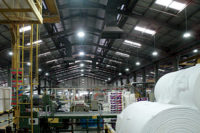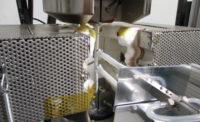NDT for Composites Market to Experience Healthy Expansion
MOUNTAIN VIEW, CA--Advanced composite materials are being used to develop more durable, lightweight and high performance materials and products.
They are increasingly being applied within the aerospace, automotive, oil and gas, and wind energy sectors, particularly in critical structural applications, where structural integrity is essential. However, these composite materials are susceptible to flaws. As such, non-destructive testing (NDT) is detects the presence of internal irregularities in the composite material, without affecting its physical integrity and subsequent service.
New analysis from Frost & Sullivan, Non-Destructive Testing Technologies for Composites, finds that the market for NDT for composites is set to expand, fuelled by the growing use of composites in various application sectors, as well as stricter safety regulations. The research covers ultrasonic, radiography, thermography and shearography testing.
“Composite applications are strictly compliance-driven and there are stringent government safety regulations to which the composites industry must adhere,”
noteS Frost & Sullivan Technical Insights Research Analyst Mousumi Dasgupta. “These regulations have generated significant demand for NDT methods and
inspection services. They also act as one of the key drivers for growth in the composite-focused NDT market.”
While such trends are positioned to give the market added momentum, a major challenge faced by the NDT for composites industry is the lack of trained
operators. Limited knowledge about the structural complexity of composites is hindering market growth.
NDT device manufacturers and developers are attempting to introduce easy to use systems that would require minimal operator knowledge for carrying out the
inspection. They are also developing automated tools that offer improved defect detection capability, which might replace manual testing techniques.
“For inspecting exceptionally large parts and production volumes, computer-controlled robotic systems are being integrated with NDT devices,” concluded
Dasgupta. “Rapid data processing is now possible with advancements in hardware and software, which allows the operator to detect damage in real time.”
Looking for a reprint of this article?
From high-res PDFs to custom plaques, order your copy today!





